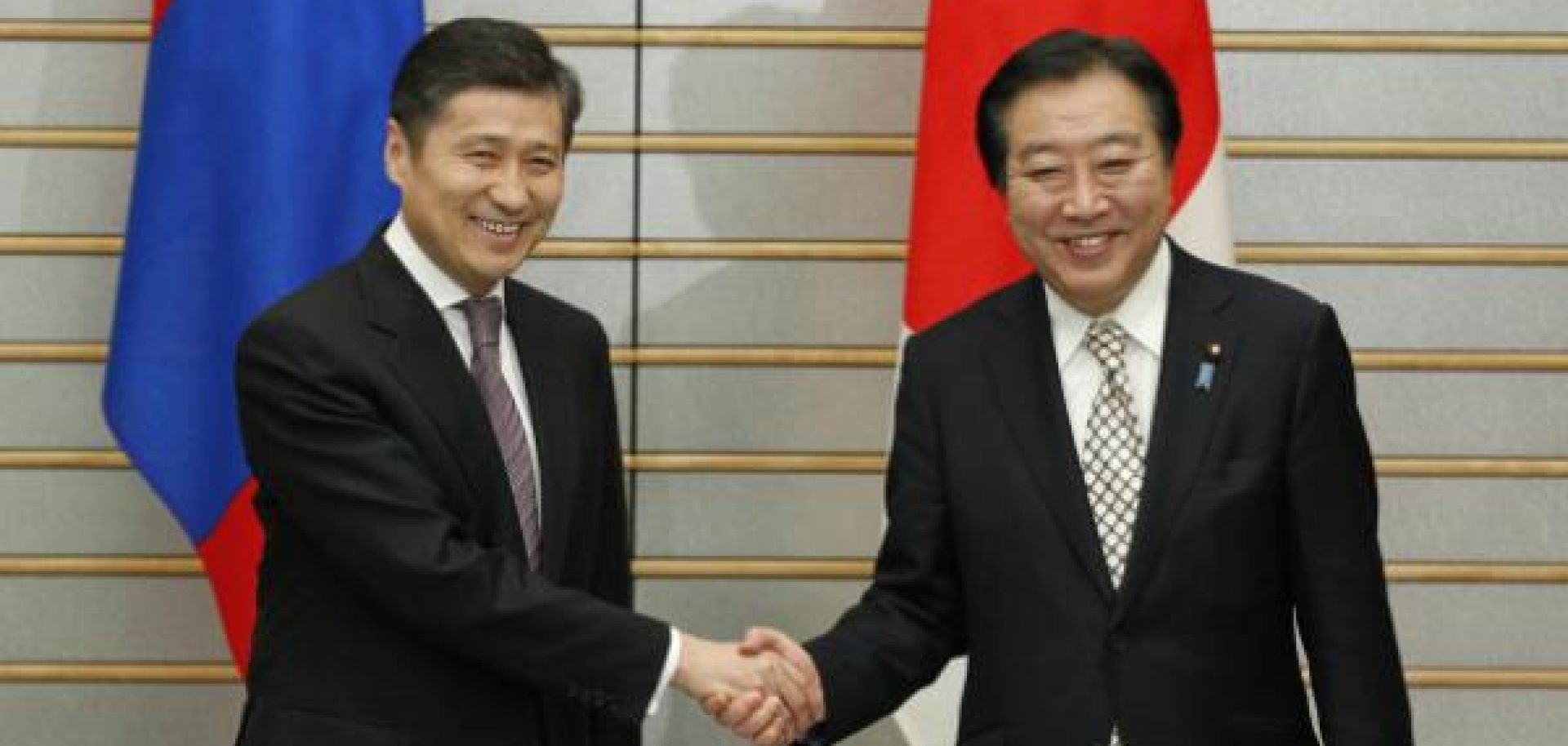ASSESSMENTS
Japan, Mongolia: Geographic Challenges to a Free Trade Agreement
Mar 15, 2012 | 17:25 GMT

KIM KYUNG HOON/AFP/Getty Images
Summary
Mongolian Prime Minister Sukhbaatar Batbold is concluding a six-day visit to Japan that marked the 40th anniversary of diplomatic ties between the two Asian nations. During the visit, Batbold and his Japanese counterpart, Yoshihiko Noda, agreed to launch delayed negotiations toward establishing the Economic Partnership Agreement (EPA), a wide-reaching free trade agreement (FTA) that includes intellectual property rights protection, liberalized investment rules and free movement of labor. Were it to materialize, the deal would mark the first ever FTA for Mongolia. But more important, the deal would transcend economic cooperation.
Mongolia sits between China and Russia, with no direct access to the sea or to any other country. Its history has been influenced by its two larger neighbors, and Moscow and Beijing have periodically dominated Ulaanbaatar politically. Since the 1990s, Mongolia has sought a more neutral foreign policy with its two neighbors; this strategy has evolved to include a search for a "third neighbor," a strategic partner that can provide balance and give Mongolia additional space when dealing with Russia and China. To that end, Mongolia has courted the United States — but with limited success. More recently, it has been looking closer afield, at Japan in particular, given the size of the Japanese economy, its need for resources and its cautious relationship with Russia and China. But even with the EPA, geographic constraints will still limit the extent to which Mongolia will be able to consider Japan its third neighbor.
Subscribe Now
SubscribeAlready have an account?
